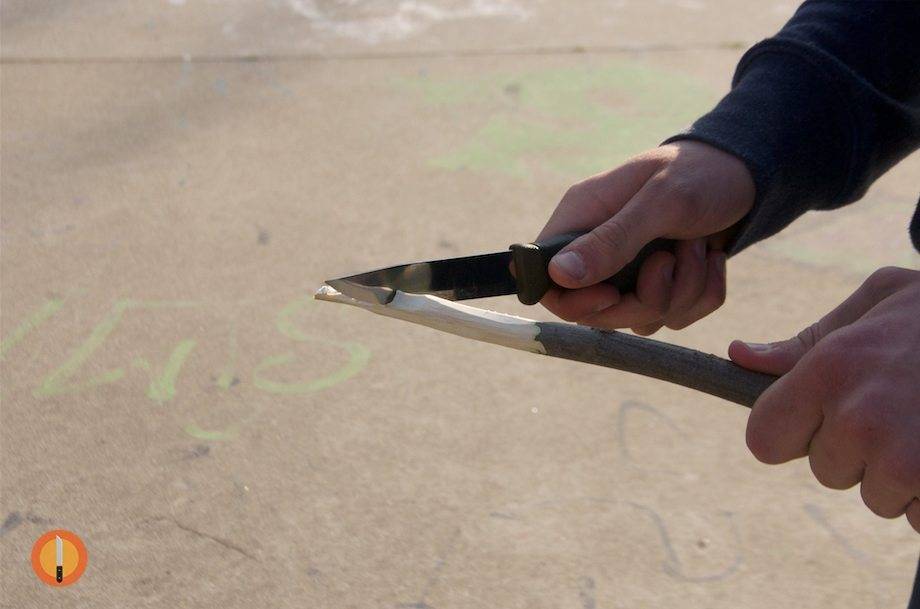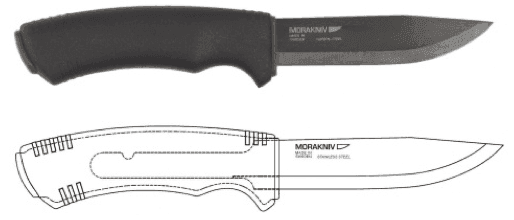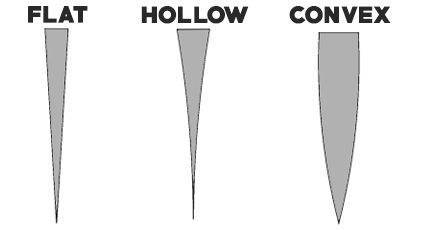Survival and Outdoors
8 Questions To Ask Before Buying a Survival Knife
01.04.2016
In the bushcraft, survival, and prepper communities people commonly talk about the “One Tool Option” or “One Knife Option”. Almost always it relates to the most useful tool one can take into the woods and still survive. And almost always people choose some sort of knife. While I feel the one tool option idea is not a practical exercise, it is a great mental exercise as it exposes what is and what is not useful in a knife. In this article I will look at the common tasks a good survival knife needs to perform. I will also help define and clarify what a good survival knife is and what it is not.
WHAT IS A GOOD SURVIVAL KNIFE?
There is an axiom: “The best survival knife is the knife you have”. It means that whatever knife you have on your person in a true survival situation is the best knife because it is all you have. However the knife we carry is dictated by our choice and knowledge. I humbly aim to improve our knowledge. See this article: SHTF – 23 SURVIVAL EXPERTS SHARE THEIR KNIFE OF CHOICE. Many of the knives share certain properties and criteria. After reading further below you will be able to see the commonalities with the selections the experts made.
The renowned boreal forest survival authority, Mors Kochanski, is often quoted as saying, “A good survival knife is a pry bar with an edge”. A good survival knife meets several criteria. It should be full tang (or one piece construction), have at least a 6 inch blade, be made from carbon steel, have a 90 degree spine, and sport a convex grind. Cost is not a factor. These criteria are not unbreakable rules. They are strong suggestions. Many people hold these criteria too tightly. In reality these form the basis of how we think about a good knife.
[box]
Here Are My 8 Criteria to Choose A Good Survival Knife
[/box]
1. WHAT WILL YOU USE YOUR KNIFE FOR?

Common tasks a good survival knife needs to perform are cutting down saplings, making feather sticks, processing firewood, batoning, striking a ferro rod, making shelter, making traps, processing game, making cordage, making hunting tools, digging out splinters, prying things apart, and defending yourself.
You also have to evaluate those tasks in the environment you find yourself in. Life near salt water can corrode a knife. Are you in extreme cold or a desert? Are you in a constantly wet rain forest?
Lastly you need to evaluate your specific needs. Are there any tasks you need to perform that aren’t listed above? Are there any above you can discard? Are there any physical or health related concerns you need to account for such as hand size, ergonomics, or materials allergies?
A knife that cannot consistently and reliably perform these tasks in your environment without breaking should be looked at with scrutiny.
2. WHAT TANG DOES THE KNIFE HAVE?
Behind the full tang concept is a need for a blade that won’t break as force is applied to the handle. A full tang knife is one that does not have the tang reduced to fit the handle. Instead the tang is visible on all 3 edges of the handle. Some full tang knives even have an extra portion of tang protruding from the bottom of the handle to act as an impact tool. The Ontario RBS 6 is a good example.

Yet a full tang is optional. It is not a hard and fast rule. Many people prefer to use a Mora knife and those are ¾ tang.

Still others choose a one piece knife such as my favorite, the Cold Steel Bushman. It is all one piece with the blade tang rounded over to form a handle. These can take a ton of punishment and are very versatile.

3. WHAT LENGTH IS IT?
Six inches is an ideal length for a survival knife as a “one tool option”. It is long enough for batoning through wood and limbing branches yet short enough for more precise tasks such as making feather sticks, making trap triggers, or digging out splinters.
I prefer a 7 inch blade as it makes limbing branches easier. The extra length allows me to “flick” the blade through branch off shoots instead of requiring me to push through them. A shorter length is also common as it allows different methods of carry. Mora knives are commonly carried around the neck.
4. WHAT STEEL IS THE KNIFE MADE OF?
This is also a guideline more than a rule. The advantage of good carbon steel is that is takes an edge easily, it holds an edge well, and you can get sparks from the spine by striking it with a rock similar to a traditional flint and steel. However carbon steel is prone to rust. Many people instead choose various forms of stainless steel due to its rust inhibiting properties. For people who have other methods of fire making, carbon steel is not as much of a priority.
5. WHAT SPINE DOES THE KNIFE HAVE?

The spine (back) of many knives often have details, added features, or are even rounded over. A good survival knife should have at least one good spot on the spine that is capable of getting sparks from a ferro rod. Jimping often works well if it is cut properly. Otherwise, a good flat spot positioned 90 degrees to the plane of the blade flats/grind is ideal. It gives a good sharp corner to strike the ferro rod.
6. WHAT GRIND?

Many people prefer a convex grind on their survival knives for a couple reasons. One, it is the best edge profile for batoning with as it creates an arch shaped wedge in the wood being processed. Other grinds become stuck more often. Secondly, since (as a one tool option) all you may have are the clothes on your back and a good survival knife, you most likely don’t have any sharpening equipment handy. You will need to maintain the edge with whatever you have on hand, such as a flat hard rock suitable to sharpen with. As any knife sharpener knows, freehand sharpening on stones results in a convex grind.
Others contrast in their preferences by choosing differing grinds such as full-flat or hollow. These are also good choices, but for different reasons. Hollow grinds are great a making feather sticks because they allow the blade to get a shallower angle to the wood. Yet they are often thinner and more prone to breakage. Full flat grinds are often the best all-around grind as they handle most tasks equally. They are the, “middle ground” of survival knife edges being the jack of all tasks and master of none.
7. WHAT’S THE PRICE?

Cost is not really a factor because good knives run the gamut of cost. Some good ones can be purchased super cheap. Moras often cost under $20 online. The Cold Steel Bushman can be found for less than $30 at many online retailers. The Old Hickory seven inch butcher and the Green River hunter are under $10 at many online retailers. Sometimes you can find an Old Hickory at a thrift store for less than a dollar. Others like Condor knives, the Ontario Ranger series, KABAR Becker, Fallkniven, etc. can be more expensive. Of course you can spend hundreds of dollars on custom knives if money is not a concern. However, research your options before you buy. The last thing you want is an expensive knife you can’t use. With cost exposed you can easily see there is no excuse to choose a poor knife. What is a poor choice in a knife? Keep reading.
8. WHERE IS IT FROM?
We can no longer judge knife quality based solely upon country of origin. Many great knives come from Brazil, China, Pakistan, and other countries once thought to produce junk. Research the specific manufacturer and knife model you are interested in.
SURVIVAL KNIVES TO AVOID
A poor survival knife is one that cannot perform all the tasks mentioned in the beginning of this article. If it cannot perform those tasks you need to ask yourself why. You may even be able to ask the manufacturer. Anything with stainless steel labeled as “Surgical Steel” should be avoided as it is a generic term for no-name poor quality steel. Impulse buys at gas stations should be avoided as they are often cheaply made and break easily. Any crazy shaped fantasy knife or sword should be avoided as they are often made of poor steel and are not suited to the tasks required. Many folding knives should be avoided (as a “one tool option”) because their pivot is a weak point and they cannot take the consistent abuse a full tang knife can, though some makers/experts would argue. Rat tail tangs, tapered tangs, and hollow handles bolted to blades should be avoided. They all have an inherent weak point at the place where the handle and blade meet. For a viable one tool option the knife has to be robust.
CONCLUSION: DO YOUR RESEARCH
There are a plethora of options available for survival knife choices. Do your research. Evaluate the tasks you need a knife to perform. Look at the construction, materials, features, and cost. Look at online articles and videos about a particular knife. Armed with knowledge and aware cost is not a factor, you should be able to choose wisely based upon tasks and your needs.









